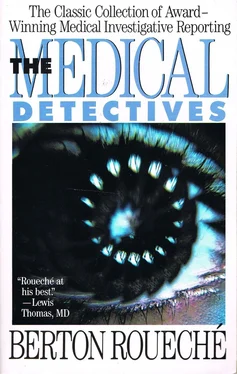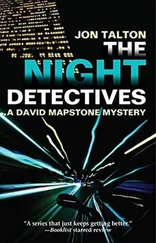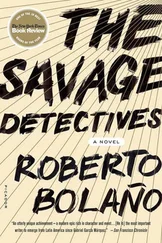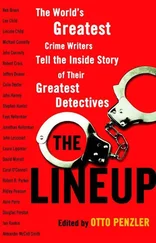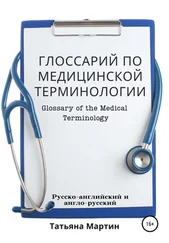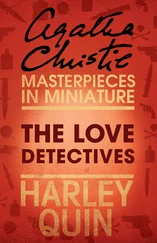The next morning, Tuesday, Dr. Pellitteri dropped by the Eclipse, which was still closed but whose proprietor and staff he had told to return for questioning. Dr. Pellitteri had another talk with the proprietor and the cook. He also had a few inconclusive words with the rest of the cafeteria's employees—two dishwashers, a busboy, and a counterman. As he was leaving, the cook, who had apparently passed an uneasy night with his conscience, remarked that it was possible that he had absent-mindedly refilled the salt can on the stove from the one that contained saltpetre. "That was interesting," Dr. Pellitteri told me, "even though such a possibility had already occurred to me, and even though I didn't know whether it was important or not. I assured him that he had nothing to worry about. We had been certain all along that nobody had deliberately poisoned the old men." From the Eclipse, Dr. Pellitteri went on to Dr. Greenberg's office, where Dr. Gettler's report was waiting.
"Gettler's test for methemoglobin was positive," Dr. Greenberg said. "It had to be a drug now. Well, so far so good. Then we heard from Pensa."
"Greenberg almost fell out of his chair when he read Pensa's report," Dr. Pellitteri observed cheerfully.
"That's an exaggeration," Dr. Greenberg said. "I'm not easily dumfounded. We're inured to the incredible around here. Why, a few years ago we had a case involving some numskull who stuck a fistful of potassium-thiocyanate crystals, a very nasty poison, in the coils of an office water cooler, just for a practical joke. However, I can't deny that Pensa rather taxed our credulity. What he I mil found was that the small salt can and the one that was supposed to be full of sodium nitrate both contained sodium nitrite . The other food samples, incidentally, were O.K."
"That also taxed my credulity," Dr. Pellitteri said.
Dr. Greenberg smiled. "There's a great deal of difference between nitrate and nitrite," he continued. "Their only similarity, which is an unfortunate one, is that they both look and taste more or less like ordinary table salt. Sodium nitrite isn't the most powerful poison in the world, but a little of it will do a lot of harm. If you remember, I said before that this case was almost without precedent—only ten outbreaks like it on record. Ten is practically none. In fact, sodium-nitrite poisoning is so unusual that some of I he standard texts on toxicology don't even mention it. So Pensa's report was pretty startling. But we accepted it, of course, without question or hesitation. Facts are facts. And we were glad to. It seemed to explain everything very nicely. What I've been saying about sodium-nitrite poisoning doesn't mean that sodium nitrite itself is rare. Actually, it's fairly common. It's used in the manufacture of dyes and as a medical drug. We use it in treating certain heart conditions and for high blood pressure. But it also has another important use, one that made its presence at the Eclipse sound plausible. In recent years, and particularly during the war, sodium nitrite has been used as a substitute for sodium nitrate in preserving meat. The government permits it but stipulates that the finished meat must not contain more than one part of sodium nitrite per five thousand parts of meat. Cooking will safely destroy enough of that small quantity of the drug." Dr. Greenberg shrugged. "Well, Pellitteri had had the cook pick up a handful of salt—the same amount, as nearly as possible, as went into the oatmeal—and then had taken this to his office and found that it weighed approximately a hundred grams. So we didn't have to think twice to realize that the proportion of nitrite in that batch of cereal was considerably higher than one to five thousand. Roughly, it must have been around one to about eighty before cooking destroyed part of the nitrite. It certainly looked as though Gettler, Pensa, and the cafeteria cook between them had given us our answer. I called up Gettler and told him what Pensa had discovered and asked him to run a specific test for nitrites on his blood samples. He had, as a matter of course, held some blood back for later examination. His confirmation came through in a couple of hours. I went home that night feeling pretty good."
Dr. Greenberg's serenity was a fugitive one. He awoke on Wednesday morning troubled in mind. A question had occurred to him that he was unable to ignore. "Something like a hundred and twenty-five people ate oatmeal at the Eclipse that morning," he said to me, "but only eleven of them got sick. Why? The undeniable fact that those eleven old men were made sick by the ingestion of a toxic dose of sodium nitrite wasn't enough to rest on. I wanted to know exactly how much sodium nitrite each portion of that cooked oatmeal had contained. With Pensa's help again, I found out. We prepared a batch just like the one the cook had made on Monday. Then Pensa measured out six ounces, the size of the average portion served at the Eclipse, and analyzed it. It contained two and a half grains of sodium nitrite. That explained why the hundred and fourteen other people did not become ill. The toxic dose of sodium nitrite is three grains. But it didn't explain how each of our eleven old men had received an additional half grain. It seemed extremely unlikely that the extra touch of nitrite had been in the oatmeal when it was served. It had to come in later. Then I began to get a glimmer. Some people sprinkle a little salt, instead of sugar, on hot cereal. Suppose, I thought, that the busboy, or whoever had the job of keeping the table salt shakers filled, had made the same mistake that the cook had. It seemed plausible. Pellitteri was out of the office—I've forgotten where—so I got Food and Drugs to step over to the Eclipse, which was still under embargo, and bring back the shakers for Pensa to work on. There were seventeen of them, all good-sized, one for each table. Sixteen contained either pure sodium chloride or just a few inconsequential traces of sodium nitrite mixed in with the real salt, but the other was point thirty-seven per cent nitrite. That one was enough. A spoonful of that salt contained a bit more than half a grain."
"I went over to the hospital Thursday morning," Dr. Pellitteri said. "Greenberg wanted me to check the table-salt angle with the men. They could tie the case up neatly for us. I drew a blank. They'd been discharged the night before, and God only knew where they were."
"Naturally," Dr. Greenberg said, "it would have been nice to know for a fact that the old boys all sat at a certain table and that all of them put about a spoonful of salt from that particular shaker on their oatmeal, but it wasn't essential. I was morally certain that they had. There just wasn't any other explanation. There was one other question, however. Why did they use so much salt? For my own peace of mind, I wanted to know. All of a sudden, I remembered Pellitteri had said they were all heavy drinkers. Well, several recent clinical studies have demonstrated that there is usually a subnormal concentration of sodium chloride in the blood of alcoholics. Either they don't eat enough to get sufficient salt or they lose it more rapidly than other people do, or both. Whatever the reasons are, the conclusion was all I needed. Any animal, you know, whether a mouse or a man, tends to try to obtain a necessary substance that his body lacks. The final question had been answered."
[1947]
CHAPTER 2
A Pig from Jersey
Among those who passed through the general clinic of Lenox Hill Hospital, at Seventy-sixth Street and Park Avenue, on Monday morning, April 6, 1942, was a forty-year-old Yorkville dishwasher whom I will call Herman Sauer. His complaint, like his occupation, was an undistinguished one. He had a stomach ache. The pain had seized him early Sunday evening, he told the examining physician, and although it was not unendurably severe, its persistence worried him. He added that he was diarrheic and somewhat nauseated. Also, his head hurt. The doctor took his temperature and the usual soundings. Neither disclosed any cause for alarm. Then he turned his attention to the manifest symptoms. The course of treatment he chose for their alleviation was unexceptionable. It consisted of a dose of bismuth subcarbonate, a word of dietetic advice, and an invitation to come back the next day if the trouble continued. Sauer went home under the comforting impression that he was suffering from nothing more serious than a touch of dyspepsia.
Читать дальше
